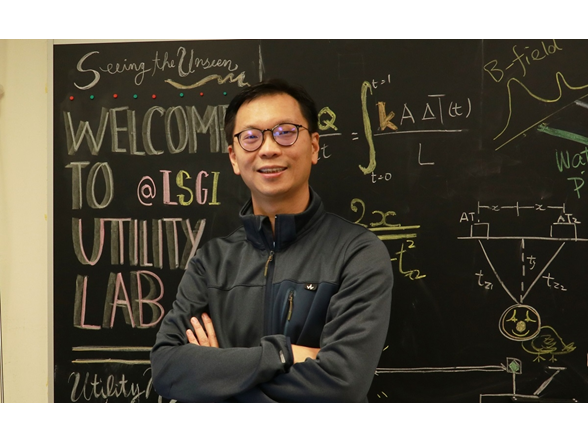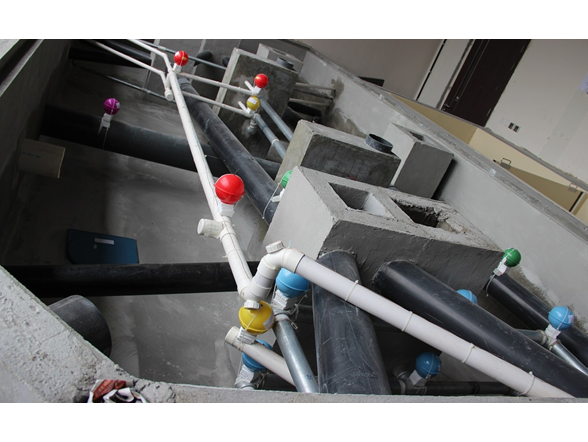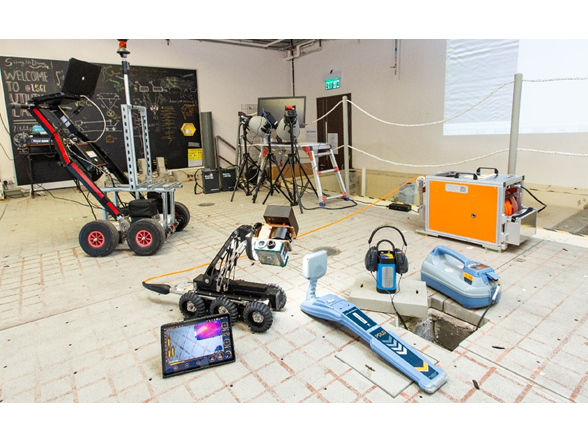Non-destructive Diagnostics for Underground Utilities
Visualising and locating buried pain points

We all take it for granted. We turn on the tap and expect clean water to come out. We flip a light switch and expect the bulb to glow. It all happens as a matter of course and few of us ever wonder how water, electricity, gas and broadband internet are made available to our home. Our city is built upon an intricate network of utility pipes and cables underground. Their proper maintenance and timely repair in case of failure are vital to not only our comfort, but also our life. However, as such network is buried underground, it’s not always easy to locate where exactly the problem lies, leading to delays and futile efforts.
In this regard, Ir Dr Wallace Wai-lok Lai, Associate Professor of the Department of Land Surveying and Geo-Informatics and the department’s BSc programme leader, works with a research team to envision the unseeable, garnering expertise in 3D mapping and surveying of subterranean utilities network. Not only do they contribute in locating leaks, bursts or voids with various cutting-edge technologies, but they also developed industry standards, criteria for screening service providers, and an accreditation system for related practitioners.
Radiographer, doctor and detective for subterranean structures
The team uses acoustic leak noise correlator, electromagnetic pipe and cable locators, ground penetrating radar (GPR), infrared camera and electromagnetic induction method to map 3D locations of underground pipes and cables while checking their physical conditions. “It’s like an ultrasound or X-ray scan when you go to the doctor. As different materials reflect and absorb waves differently, metal or plastic pipes would look different from concrete on a scan. One can even tell if there is a void or a broken pipe by reading those images,” explained Dr Lai.
As in MRI or X-ray scans, however, these images only make sense to the professionals and there is quite a bit of subjective interpretation involved in deciphering them. “Just like two doctors may come to different diagnoses after reviewing the same set of MRI scans, underground imaging isn’t conclusive on its own. It takes expertise and experience to read the images correctly and an inquisitive mind to rule out the possibilities. Thus, we are simultaneously a radiographer, a doctor and a forensic detective in terms of underground survey.” The team is currently investigating the use of artificial intelligence and machine learning to minimise bias when interpreting underground imaging. Yet, a lot more ground-truthing data need to be collected before that can be possible.
Void survey blind test against road collapse
Apart from imaging underground utilities and diagnosing the sources of problems, Dr Lai’s team also developed the industry standard known as “Specifications for Non-destructive Testing Surveying, Imaging and Diagnosis for Underground Utilities”, in conjunction with industry leaders and the Government. They also provide consultancy service to utility companies and government departments.
“Road collapse could be fatal and it’s important to take proactive measures to find underground voids before a road collapses. Thus, the Highways Department regularly hires companies to conduct underground surveys. However, there hasn’t been any standard in assessing the performance of these service providers, making it difficult to decide which of them should be awarded the contract. The department therefore commissioned us to set up a baseline performance standard, so as to screen the bidding companies,” said Dr Lai.
As a result, the team devised a blind test where they buried air-filled exercise balls under concrete and block pavement at varying depths. Interested service providers had to take a test to locate those voids without damaging the concrete. Only those reaching a passing score will receive an invitation to tender.
Leak detection training ground
In addition to locating underground voids, the blind test concept is also applicable to water pipe leaks. The Water Supplies Department (WSD) has long been training in-house staff to locate leaks. To fulfil new and growing training needs, they engaged Dr Lai’s team to design a new leak detection training ground in Tsing Yi.
“The new training ground spans across 19,000 square feet with almost a hundred possible leak points and a 2,500 square-foot indoor training centre. In this facility, a trainer may set up scenarios based on real-life cases, and pick certain leak points for trainees to locate. WSD will also facilitate the taking forward of those appropriate proposals of related training programmes offered by the Hong Kong Institute of Construction for gainful utilisation of the training ground,” explained Dr Lai.






